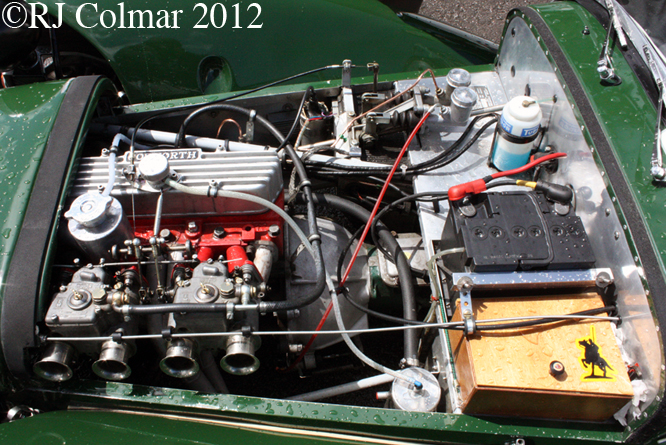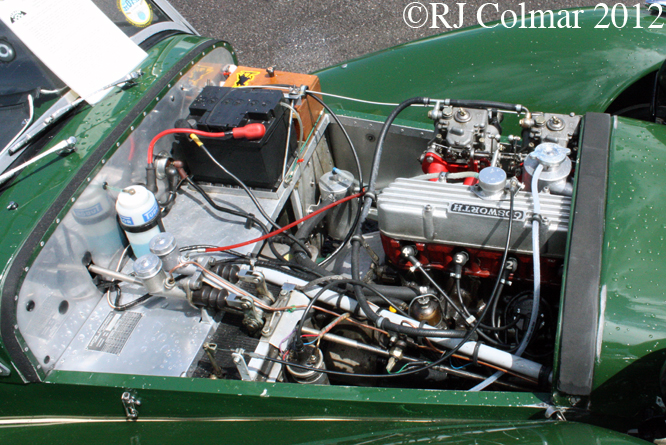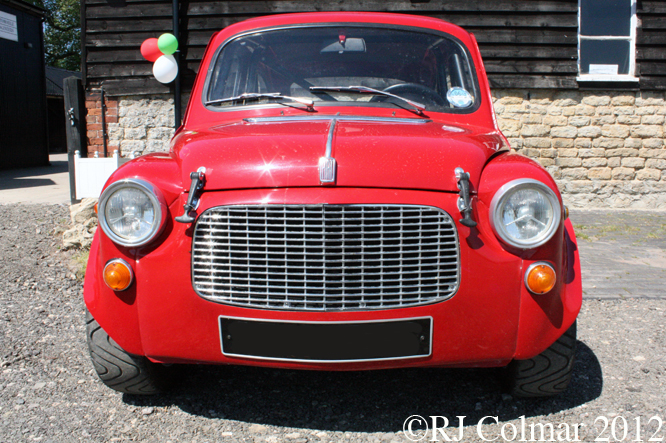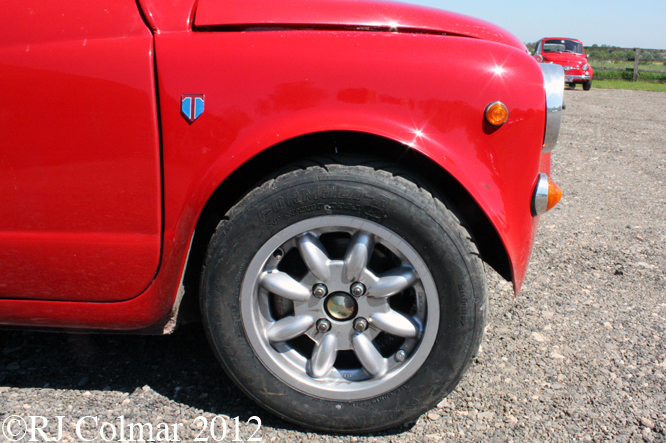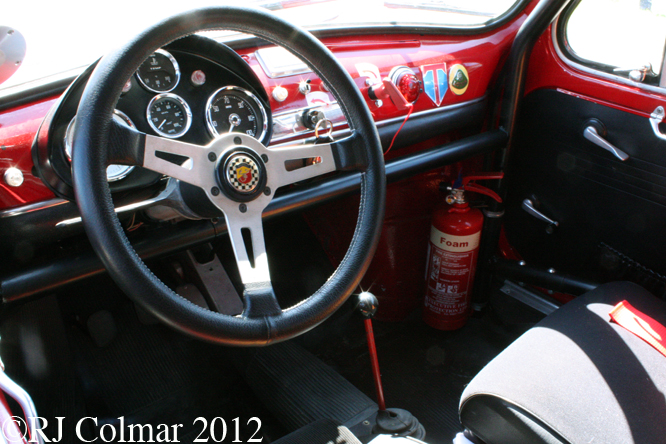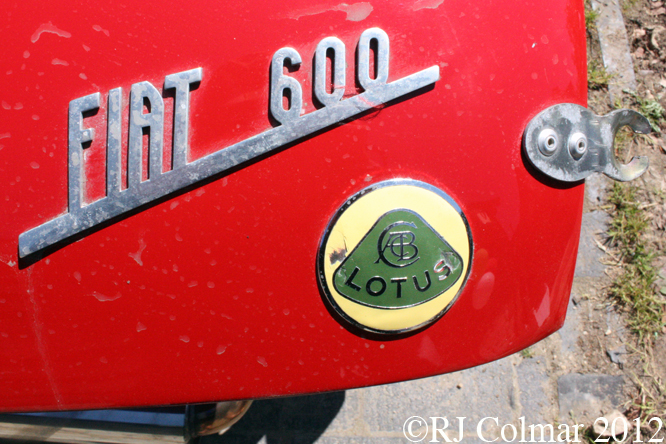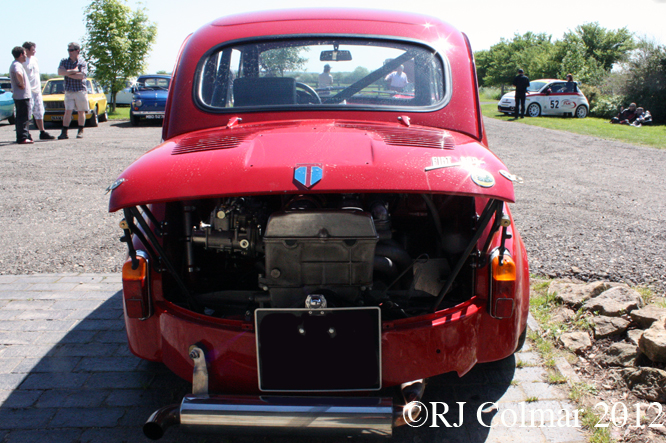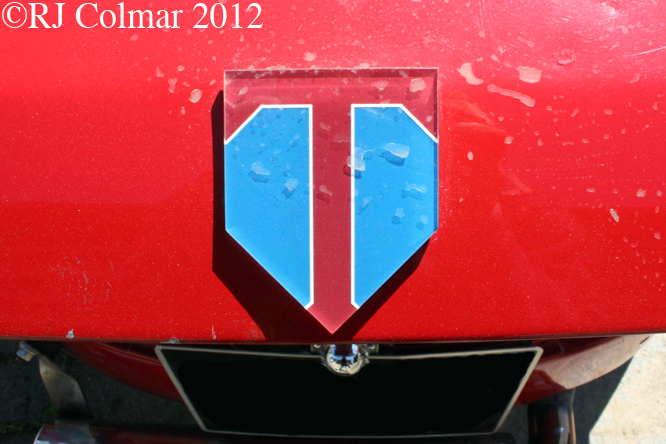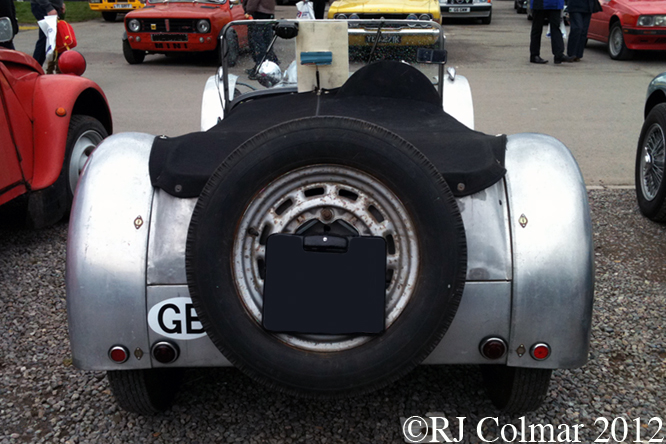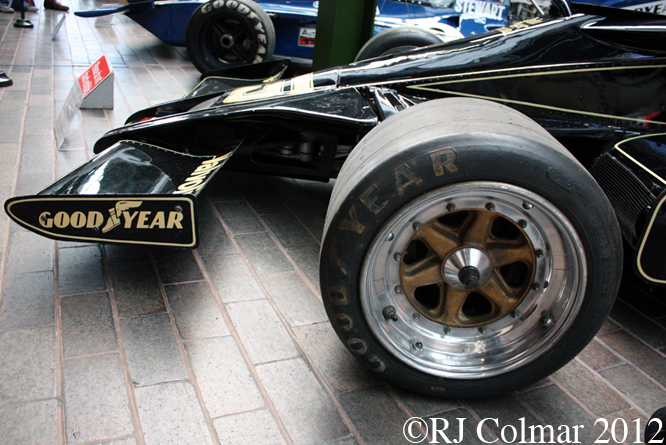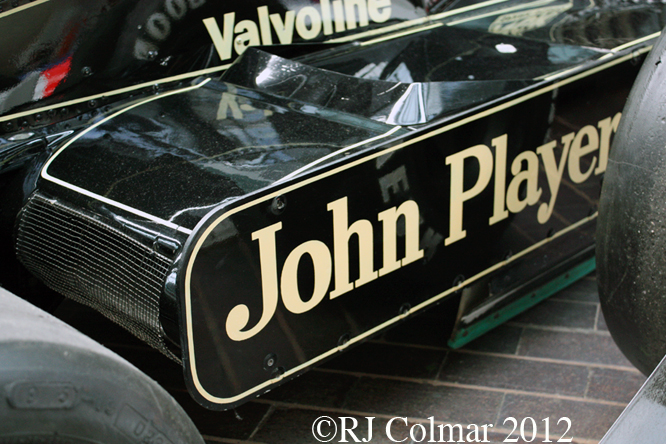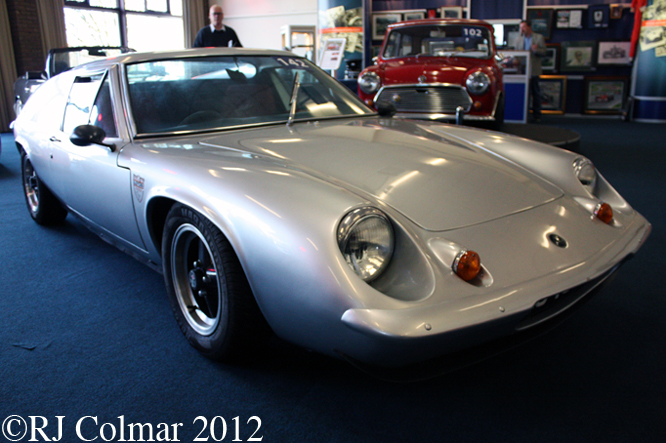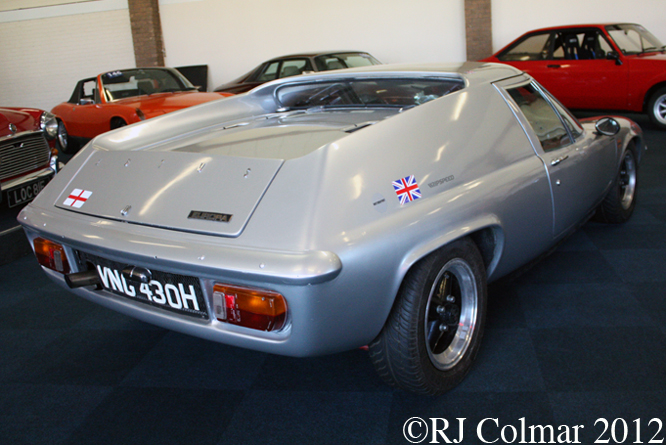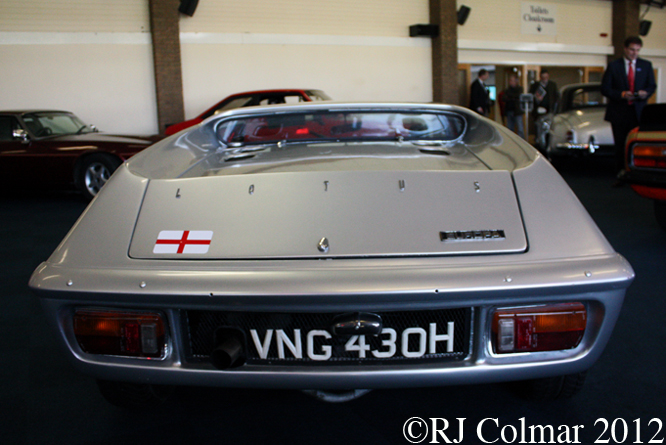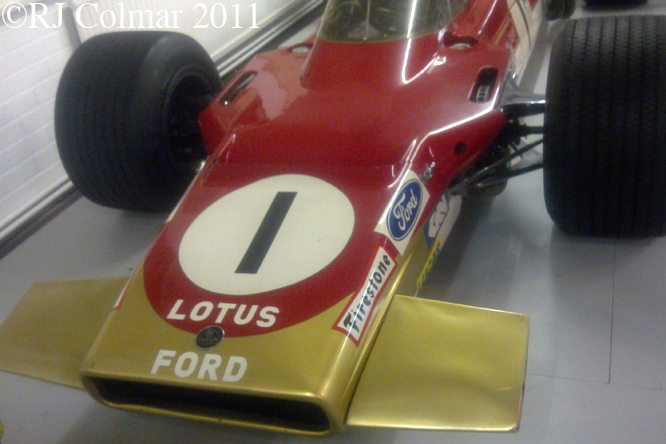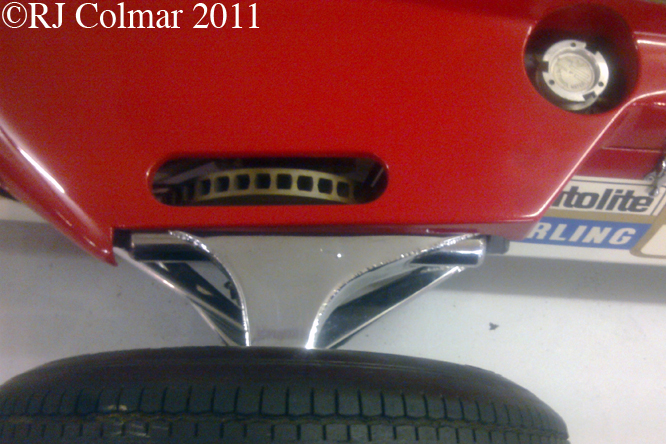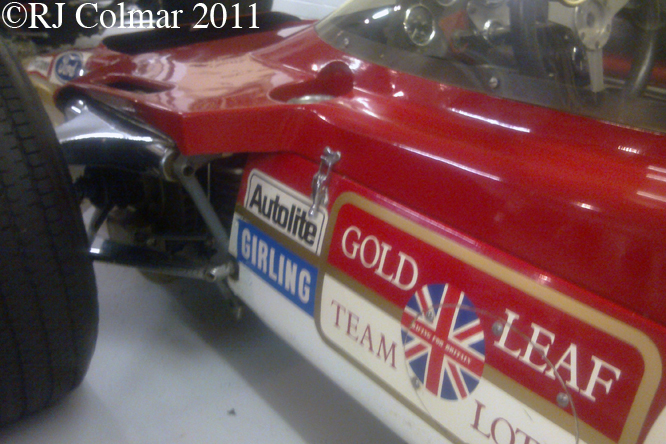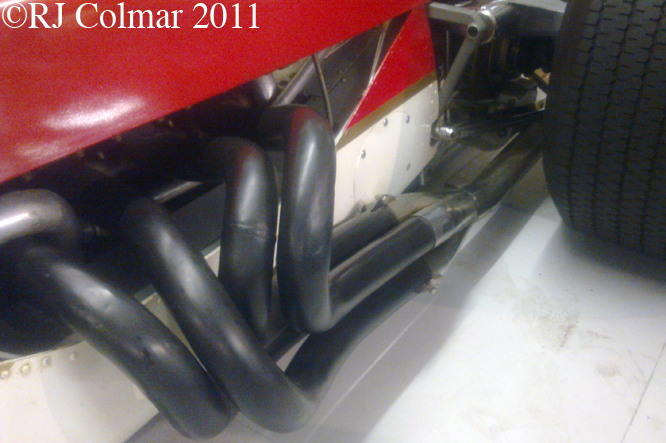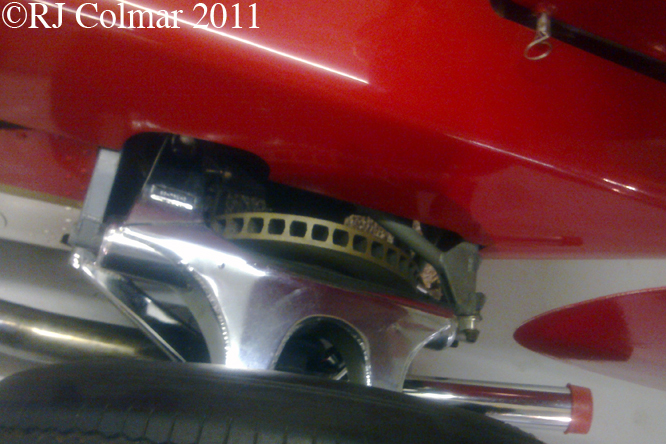I remember when I first set eyes on the publicity photo’s of the Lotus 76, my reaction was an instant WOW ! The two team cars which had been completed a little late were to replace the venerable Lotus 72 and be driven by Ronnie Peterson and Jacky Ickx in the 1974 season starting at the South African Grand Prix.
The new car was intended to be slimmer and lighter than the Lotus 72 which had helped Jochen Rindt and Emerson Fittipaldi to win World Drivers Championships in 1970 and 1972 and helped Lotus secure the World Constructors Championship in 1970, ’72 and ’73.

Innovations on the car included an electronic clutch operated by a button on the gear stick, except when starting from rest for smoother gear changes. Two brake pedals were fitted either side of the steering column operating a single split leaver to encourage left foot breaking to minimise the upset of the balance of the car when approaching corners and two thin, for the period, rear wings mounted one above the other.
Much to the consternation of the press and Lotus fans Colin Chapman sold the naming rights to the Lotus 76 which for the 1974 season was to be known as a John Player Special the chassis number of the car seen here at Goodwood was referred to as JPS 9 though the chassis was unofficially referred to in the press and by enthusiasts as 76/1.
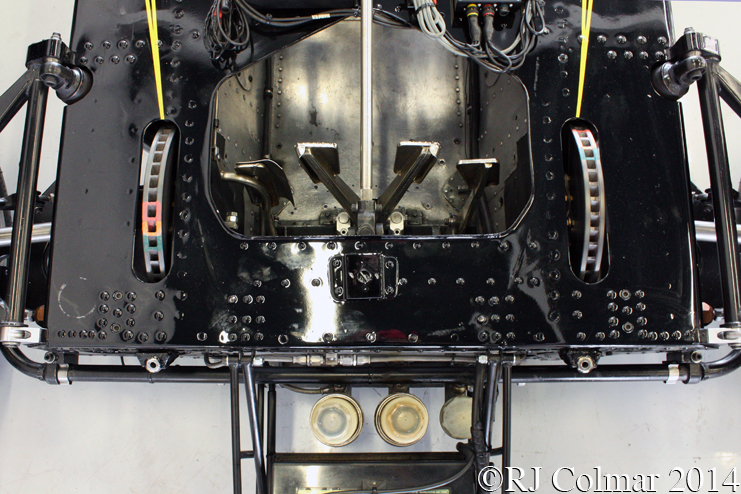
A pattern of retirements set in at the South African GP which was to repeat itself until by the Monaco Grand Prix Lotus Team had decided to revive the Lotus 72 which Ronnie Peterson promptly drove to the first of 3 against the odds victories during the season.
Development of Lotus 76 was split between the ageing Lotus 72 during 1974, to generate more down force larger front wings and the larger rear wing of the Lotus 72 were fitted to the Lotus 76 which appeared in Belgium.

With the 76 having been observed to be popping wheelies after additional down force had been added the front nose cone was then replaced with a cut down version from the Lotus 72, the radiators moved from ahead of the rear wheels to behind the front wheels and horizontal boards were added along the top of chassis between the front and rear wheels as seen in this linked photo of 76/2 (JPS 10) at the 1974 British GP.
By now the 76 was being taken to races purely in case of an emergency and during practice of the 1974 German Grand Prix such such an emergency arose after Ronnie Peterson crashed Lotus 72/8. The team had no option but to press the by now overweight and unloved 76 back into service and did so by grafting the rear suspension engine and gearbox from the wrecked 72 onto the back of 76/2 (JPS 10). With the car now looking more like it’s predecessor Lotus 72 than a Lotus 76 Ronnie Peterson recorded the 76’s only finish with a forth place on the toughest circuit on the calender !

After confusion about Mario Andretti starting from 3rd place in the 1974 US Grand Prix, in his Parnelli, third Lotus driver Tim Schenken took the flag of the 1974 US Grand Prix only to be disqualified for being outside the top 26 qualifiers as Andretti had managed to get his car onto the grid, ironically only to be also disqualified for a push start away from the line ! This was Schenken’s and the Lotus 76 last Grand Prix start.
However this was not quite the end of the Lotus 76 story, Colin Chapman was a long time member of a motor club in North London and after a little badgering for ‘something a bit quick’ from fellow long time member, David Render, who participated in Sprints and Hillclimbs, Colin relented and told his friend to turn up at the Lotus factory at Hethel with a trailer.
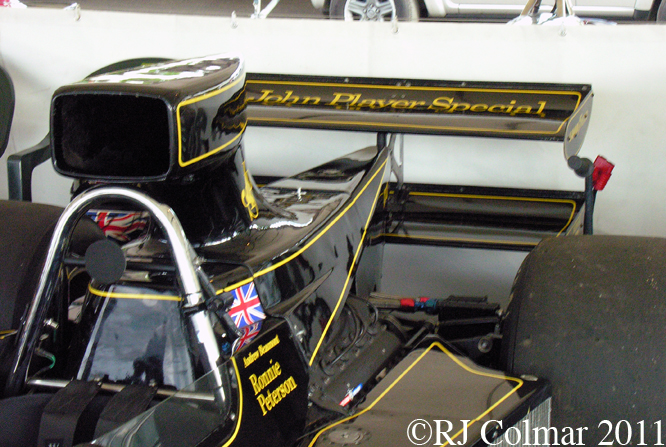
When David turned up at Hethel early in 1976 he saw this huge black car with twin wings and asked who is this for ? He was quite surprised to learn that it was intended for him !
David drove what is believed to be 76/2 (JPS 10), in original lightweight form, for 2 years and among many victories won the 1976 Brighton Speed Trials when the event was run over a standing kilometer 0.6 miles and clocked a time of 18.77 seconds reaching a 118 mph as he crossed the line.

At a recent talk, David gave to the Bristol Pegasus Motor Club, he related how on finding the car suffered from terrible understeer / push he added a lump of lead, taken from his old Allard trials car, beneath the nose cone of the 76 and that solved the problem, though he never told Colin ‘Added Lightness’ Chapman what he had done.
The car featured in today’s post 76/1 (JPS 9) seen at Goodwood Festival of Speed and at the 2011 Silverstone Classic belongs to Andrew Beaumont. According to Classic Team Lotus during the first of two races at the 2011 Silverstone Classic meeting Andrew’s double rear wing got savaged, but it did not have much detriment to the performance of the car and he finished 22nd.
John Barnard eventually perfected a semi automatic electronic clutch and gearshift mechanism with a steering wheel mounted paddle shift for the 1989 Ferrari 640 which won first time out at the Brazilian GP in the hands of Nigel Mansell. This system is now de riguer in almost all top line racing cars.
My thanks to MCS, Gregor Marshall, and Tim Murray on the Lotus 76 thread at The Nostlgia Thread who helped identify a Lotus 76 at the Abbaye de Stavelot Museum as the possible home of the second Lotus 76 chassis #76/2 (JPS10).
Thanks for joining me on this ‘Electronic Clutch & Four Pedals’ edition of ‘Gettin’ a li’l psycho on tyres’ I hope you will join me again tomorrow when I’ll be looking at last weekend’s Auto Italia Day at Brooklands. Don’t forget to come back now !


